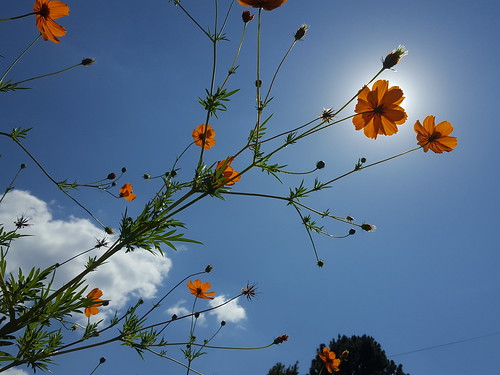Pollinator plots in pastures enhance biodiversity, ecosystems services
By Fred Miller
U of A System Division of Agriculture
Sept. 12, 2017
Fast Facts:
- Pollinators are important to some agricultural sectors
- But pollinator populations are declining
- Pollinator plots on or around pastures can provide habitat to rebuild populations
(459 words)
(Download this story in MS Word here.)
FAYETTEVILLE, Ark. — Fruit and vegetable farms, gardens and other agricultural sectors rely on pollinators to ensure abundant production, but wild pollinator populations are in decline, said Dirk Philipp, associate professor of animal science for the University of Arkansas System Division of Agriculture.
“The original prairies that covered much of the U.S., including parts of Arkansas, were species-rich,” Philipp said. Those species include many animals — bees, flies, butterflies, moths, beetles and other insects, as well as some birds, lizards and mammals — that move pollen in and among plants.
Those pollinators helped propogate abundant diversity of wild and cultivated plant species.
But farm fields and pastures today contain only limited food and forage plants. Typically, those plants do not provide good habitat for pollinator species, Philipp said. Most of the perennial grasses and herbaceous flowering plants that make good habitat for pollinators would be considered weeds in a pasture.
Pastures don’t rely heavily on pollinators, Philipp said, but they can make ideal places to locate plots of pollinator-friendly plants. Such habitats can encourage biodiversity that offers benefits to the environment, wildlife, and neighboring gardens and farms that may rely on pollinators for abundant production.
Pastures make good places for pollinator plots because they are generally low-input and pesticide use is limited, Philipp said. Although many pollinator-friendly plants are undesirable in pastures, many areas around the farm may be suitable.
Philipp suggests that edges of fields, fallow or unproductive areas, wet lands and stream banks — including intermittent stream banks — and unused areas around farm buildings could make good sites for pollinator plots.
Deliberately planting habitat grasses and flowers for pollinators can provide other benefits, Philipp said. Such plants can suppress weed growth and halt spreading into pastures from peripheral areas.
He said pollinator plots can be selected to complement existing habitats, such as ditches, fencerows and levees that offer nesting and foraging sites for pollinators.
“Leaving all or some of these areas alone can provide refuge for pollinators,” Philipp said. “Hedgerows and longer sections or patches of pollinator habitat will provide corridors for pollinator travel.”
Philipp also said some forage crops, such as clovers and alfalfa, could offer pollinator habitat or feeding grounds, though they normally are grazed or harvested before flowering. He suggests that small areas of some of these forages might be set aside and allowed to bloom.
Habitat and feeding grounds should not be farther apart than half a mile, Philipp said. “Ideally, only a few hundred yards should be between feeding and nesting sites for smaller native bee species,” he said.
Planting and maintaining a multitude of smaller pollinator plots around the farm helps keep those areas within reach of the insects.
Philipp also said pollinator habitats of wildflowers can help beautify farms and make landscapes more attractive.
About the Division of Agriculture
The University of Arkansas System Division of Agriculture’s mission is to strengthen agriculture, communities, and families by connecting trusted research to the adoption of best practices. Through the Agricultural Experiment Station and the Cooperative Extension Service, the Division of Agriculture conducts research and extension work within the nation’s historic land grant education system.
Pursuant to 7 CFR § 15.3, the University of Arkansas System Division of Agriculture offers all its Extension and Research programs and services (including employment) without regard to race, color, sex, national origin, religion, age, disability, marital or veteran status, genetic information, sexual preference, pregnancy or any other legally protected status, and is an equal opportunity institution.
# # #
Media Contact: Mary Hightower
Dir. of Communication Services
U of A System Division of Agriculture
Cooperative Extension Service
(501) 671-2126
mhightower@uada.edu
Related Links
